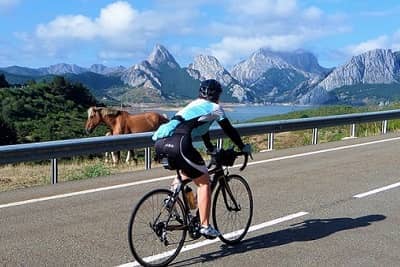Cycling in the Picos de Europa Mountains
The Picos de Europa mountain range, situated in the Asturias and Cantabria regions in the north of Spain, is a designated National Park, a status which reflects both the natural beauty of the region
and the diverse wildlife in the region.
It is accessible from major cities including Gijón, Bilbao and Oviedo - all of which are also well connected to Madrid - making it quite convenient to get to, despite how remote it can feel in parts of the park.
While the Pyrenees and the Alps are understandably among the most popular destinations for cyclists looking for a holiday in the mountains. However the Picos de Europa deserves to be mentioned alongside the two great ranges as an excellent destination for cyclists.
Below we outline some of the reasons that make the Picos de Europa an excellent choice, and why it is one of our most popular cycling tours in the summer months.
The most famous routes include staples of the Vuelta a España, such as Lagos de Covadonga and Jito de Escarandi. While nearby you can also tackle the legendary Alto del Angliru - widely regarded as one of the most challenging climbs in professional road cycling.
Around the edges of the National Park there are several gentler and more rolling routes, some of which offer fantastic views as you climb to the small passes dotted between the mountains and the Cantabrian Sea.
In addition, the Picos de Europa has a low traffic density. Aside from the main through road linking the villages, you can find many routes where you will encounter just a handful of cars each day. Despite this, the roads are nearly all recently resurfaced and in excellent condition - all the way to the top of the climbs.
The food is also excellent, particularly on the Asturian side of the Park. There is a chance to try the fantastic local Fabada Asturiana as well as the local cider - which is extremely popular throughout Spain.
The temperatures are warm, without being stifling. It can rain here, even in the summer, but no more so than you will find in the other high mountains of Europe.
If you would like any more information about Cycle Fiesta's holidays to the region, please check the links below or contact us for more information.
You can also view our profiles of all the various climbs in the Picos de Europa in the mountains section of the website.
It is accessible from major cities including Gijón, Bilbao and Oviedo - all of which are also well connected to Madrid - making it quite convenient to get to, despite how remote it can feel in parts of the park.
While the Pyrenees and the Alps are understandably among the most popular destinations for cyclists looking for a holiday in the mountains. However the Picos de Europa deserves to be mentioned alongside the two great ranges as an excellent destination for cyclists.
Below we outline some of the reasons that make the Picos de Europa an excellent choice, and why it is one of our most popular cycling tours in the summer months.
Climbs of the Picos de Europa
The main reason to visit the Picos de Europa as a cyclist is for the excellent climbing there. There are a wide variety of climbs in and around the park, ranging in length, gradient and altitude, with the toughest routes more challenging than the vast majority of climbs that you will encounter in the Pyrenees or the Alps.The most famous routes include staples of the Vuelta a España, such as Lagos de Covadonga and Jito de Escarandi. While nearby you can also tackle the legendary Alto del Angliru - widely regarded as one of the most challenging climbs in professional road cycling.
Around the edges of the National Park there are several gentler and more rolling routes, some of which offer fantastic views as you climb to the small passes dotted between the mountains and the Cantabrian Sea.
Stunning Scenery - Low Traffic
The scenery in the Picos de Europa is unique. During the winter months the area receives a lot of rain from the Atlantic Ocean (fortunately there is much less when we visit in the summer!) This helps to create the vibrant green scenery that contrasts so vividly with the sharp mountain peaks. From a cycling perspective this leads to steep gradients in places, but also to spectacular views that are without parallel in Europe.In addition, the Picos de Europa has a low traffic density. Aside from the main through road linking the villages, you can find many routes where you will encounter just a handful of cars each day. Despite this, the roads are nearly all recently resurfaced and in excellent condition - all the way to the top of the climbs.
Off the Bike
Away from the bike, the Picos de Europa also has a lot to offer visitors. The historic towns of Potes and Cangas de Onis are beautiful places to relax for a day, or to wander the narrow streets filled with artisan shops.The food is also excellent, particularly on the Asturian side of the Park. There is a chance to try the fantastic local Fabada Asturiana as well as the local cider - which is extremely popular throughout Spain.
Good Weather
While much of Spain can be too hot for cycling in the height of summer, the northern regions, including the Picos de Europa, usually offers perfect conditions.The temperatures are warm, without being stifling. It can rain here, even in the summer, but no more so than you will find in the other high mountains of Europe.
If you would like any more information about Cycle Fiesta's holidays to the region, please check the links below or contact us for more information.
You can also view our profiles of all the various climbs in the Picos de Europa in the mountains section of the website.
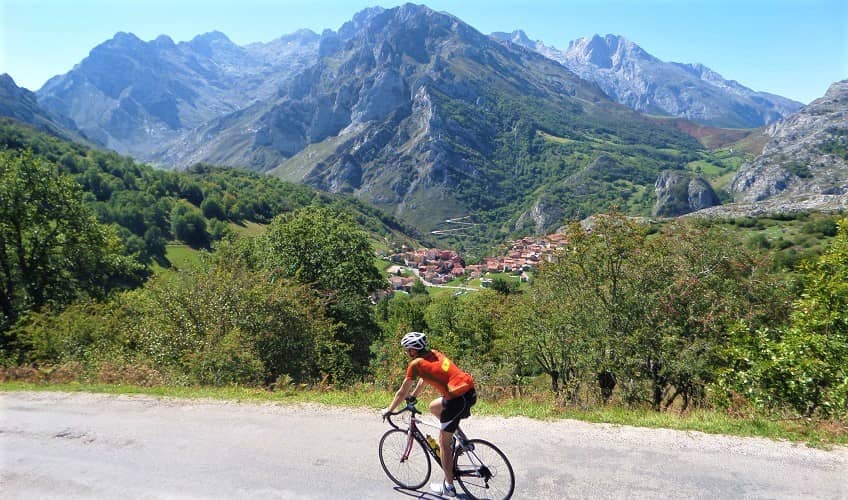
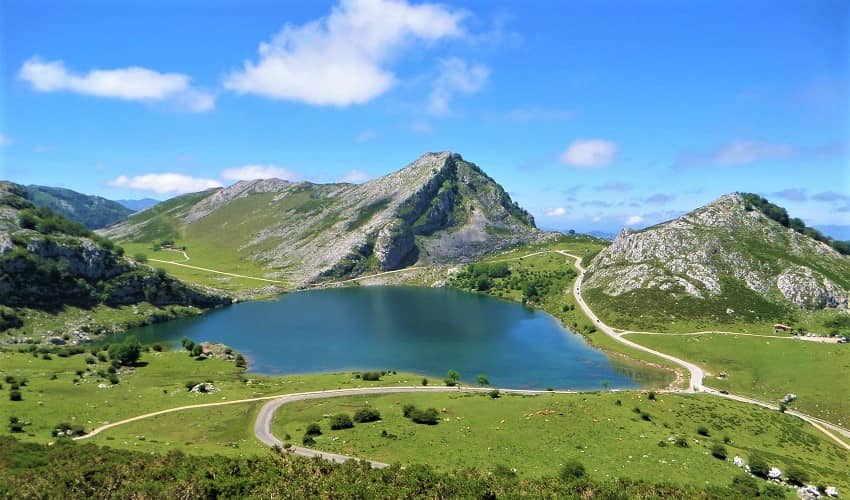
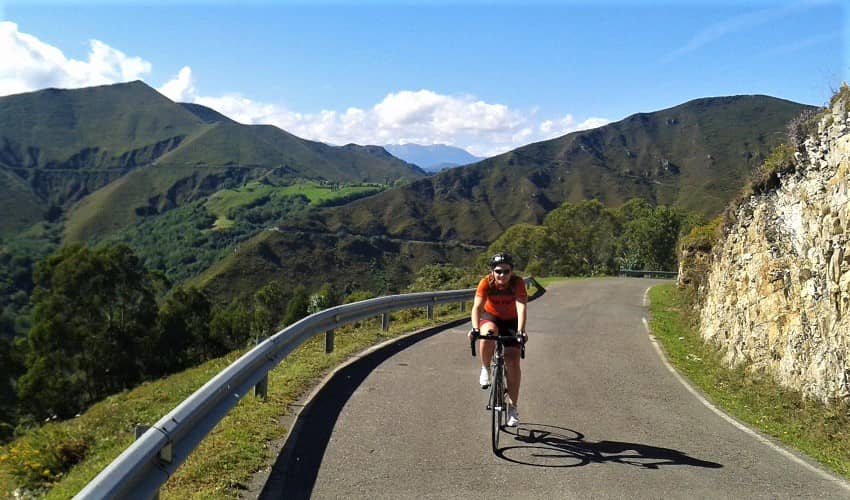
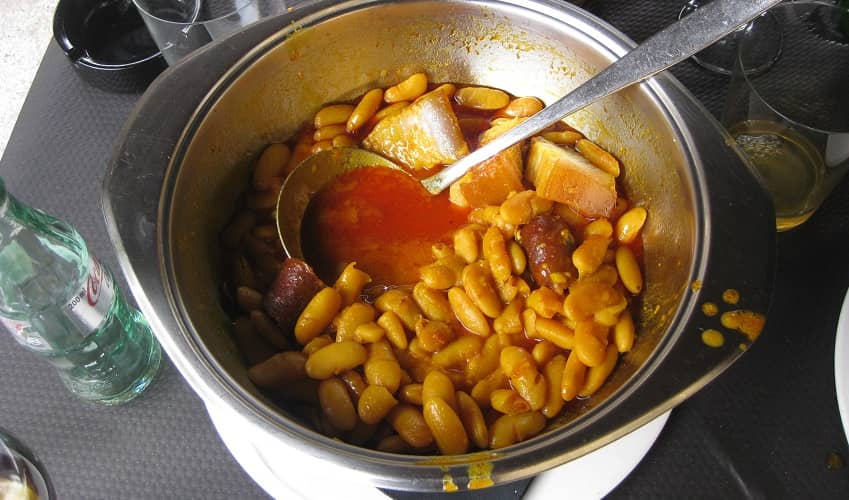
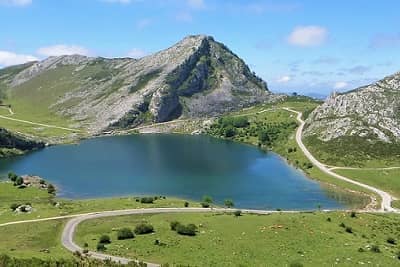
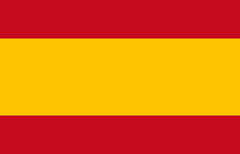 Spain
Spain
